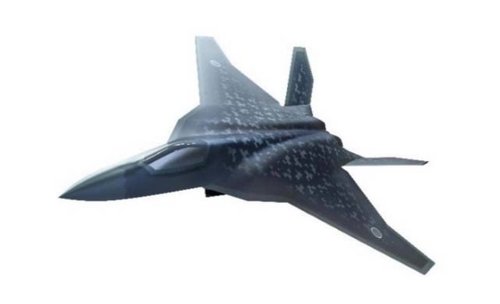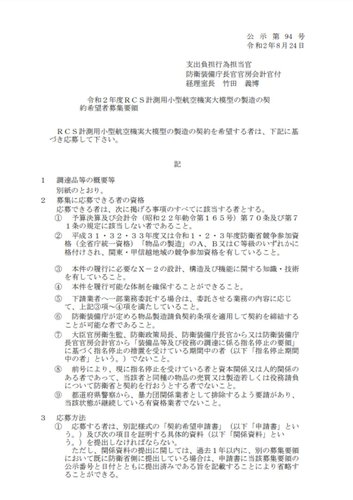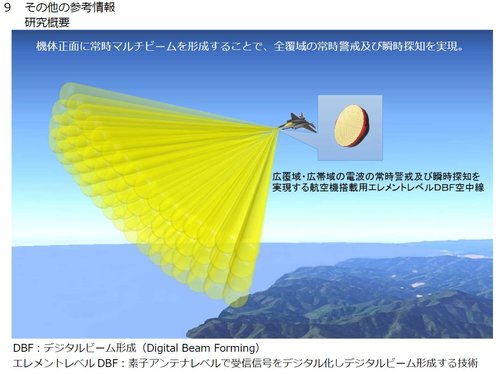You are using an out of date browser. It may not display this or other websites correctly.
You should upgrade or use an alternative browser.
You should upgrade or use an alternative browser.
Japanese next generation fighter studies (aka i3, F-3)
- Thread starter bobbymike
- Start date
-
- Tags
- f-3 japan mitsubishi
FighterJock
ACCESS: Above Top Secret
- Joined
- 29 October 2007
- Messages
- 5,594
- Reaction score
- 5,914
Only if Japan will be much more willing for tech transfer than Russia.
Then again, Japan could offer India an international variant, much like what Russia did to the Su-30MK series.
- Joined
- 2 January 2006
- Messages
- 3,822
- Reaction score
- 5,090
Oh please .... this is as likely as Germany will develop independently a 6th generation type without any foreign partner and Great Britain would happily purchase it as the €F-successor! 
Japan developing a new fighter alone is a major issue but given India's more than unique - to express it mildly - purchase and acquisition process especially demanding either "made in India" or to get full ToT, it is impossible.
Japan developing a new fighter alone is a major issue but given India's more than unique - to express it mildly - purchase and acquisition process especially demanding either "made in India" or to get full ToT, it is impossible.
Last edited:
- Joined
- 21 January 2015
- Messages
- 12,127
- Reaction score
- 16,276
Also there are likely to be technologies in it making it undesirable to sell it to a whole host of countries.Oh please .... this is as likely as Germany will get develop independently an 6th generation type without any foreign partner and Great Britain would happily purchase it as the €F-successor!
Japan developing a new fighter alone is a major issue but given India's more than unique - to express it mildly - purchase and acquisition process especially demanding either "made in India" or to get full ToT, it is impossible.
Bhurki
ACCESS: Secret
- Joined
- 16 July 2020
- Messages
- 345
- Reaction score
- 382
Japan widens foreign access to F-X fighter project
Japan widens foreign access to F-X fighter project
Japan’s Ministry of Defense (MoD) has published a notice inviting foreign companies to engage with its project to develop next-generation fighter aircraft.
www.janes.com
- Joined
- 11 February 2010
- Messages
- 1,646
- Reaction score
- 2,695
Japan widens foreign access to F-X fighter project
Japan widens foreign access to F-X fighter project
Japan’s Ministry of Defense (MoD) has published a notice inviting foreign companies to engage with its project to develop next-generation fighter aircraft.www.janes.com
Uh...kind of difficult choice between UK and US. As both not only have their own 6th Gen but also, if any prospect of export desired, it would be difficult to do so as client country might not necessarily serve the interest of either or both US-UK based firms. The US for example may deny export license for components which could be crippling the prospect.
Bhurki
ACCESS: Secret
- Joined
- 16 July 2020
- Messages
- 345
- Reaction score
- 382
US largely considers itself responsible for maintaining territorial integrity of Japan through its own security umbrella.Japan widens foreign access to F-X fighter project
Japan widens foreign access to F-X fighter project
Japan’s Ministry of Defense (MoD) has published a notice inviting foreign companies to engage with its project to develop next-generation fighter aircraft.www.janes.com
Uh...kind of difficult choice between UK and US. As both not only have their own 6th Gen but also, if any prospect of export desired, it would be difficult to do so as client country might not necessarily serve the interest of either or both US-UK based firms. The US for example may deny export license for components which could be crippling the prospect.
In an age of ever growing threat from China, the lawmakers in US may have enough impetus to allow the sale of a few complementing technologies that japan has a hard time coming through on, given that japan is largely going solo on the program which will help share the security burden with the US forces.
In the past, the sale of these controlled technologies (F-22) was not encouraged since the threat criticality in the region was low, and focus on NATO was comparitively higher.
However , the changing focus of US armed forces and their doctrines may definitely result in equivalent changes in sharing responsibility and work share with allies.
- Joined
- 11 February 2010
- Messages
- 1,646
- Reaction score
- 2,695
US largely considers itself responsible for maintaining territorial integrity of Japan through its own security umbrella.
In an age of ever growing threat from China, the lawmakers in US may have enough impetus to allow the sale of a few complementing technologies that japan has a hard time coming through on, given that japan is largely going solo on the program which will help share the security burden with the US forces.
In the past, the sale of these controlled technologies (F-22) was not encouraged since the threat criticality in the region was low, and focus on NATO was comparitively higher.
However , the changing focus of US armed forces and their doctrines may definitely result in equivalent changes in sharing responsibility and work share with allies.
The problem is not the US-Japan relationship. It will start when Japan Wants to Export the fighter overseas. e.g India or other country. The US May relax export license to Japan... BUT they can deny or even meddling around when Japan wants to export F-3 into some other nation.
And let's remember that US also sells F-35. Now let's assume India is holding a Stealth fighter tender and US offers F-35 while Japan offers F-3. India choose F-3. US can then proceed to apply pressure by denying components to India over some perhaps a make up reason. I believe this is something the Japan dont want.
Bhurki
ACCESS: Secret
- Joined
- 16 July 2020
- Messages
- 345
- Reaction score
- 382
Realistically, such a situation where Japan and US run into competition for foreign contracts is extremely far fetched.US largely considers itself responsible for maintaining territorial integrity of Japan through its own security umbrella.
In an age of ever growing threat from China, the lawmakers in US may have enough impetus to allow the sale of a few complementing technologies that japan has a hard time coming through on, given that japan is largely going solo on the program which will help share the security burden with the US forces.
In the past, the sale of these controlled technologies (F-22) was not encouraged since the threat criticality in the region was low, and focus on NATO was comparitively higher.
However , the changing focus of US armed forces and their doctrines may definitely result in equivalent changes in sharing responsibility and work share with allies.
The problem is not the US-Japan relationship. It will start when Japan Wants to Export the fighter overseas. e.g India or other country. The US May relax export license to Japan... BUT they can deny or even meddling around when Japan wants to export F-3 into some other nation.
And let's remember that US also sells F-35. Now let's assume India is holding a Stealth fighter tender and US offers F-35 while Japan offers F-3. India choose F-3. US can then proceed to apply pressure by denying components to India over some perhaps a make up reason. I believe this is something the Japan dont want.
We haven't seen any major defense exports by Japan even in areas where they hold all IP rights. Considering that, most of cutting edge developments in japan's defense sector are most likely meant to stay within their borders.
Given that we can't reasonably today envision another exportable stealth design from the USA other than the F-35 (and this idea alone would have been inconcevable only 20 years ago) it would be doubtful that a competition see a much larger design as the Japan F3 compete against the F-35. Even in India.
However, in a near future Japan's F3 could be seen as a potent opponent to the Su-57 or an export version of the J-20 on the market.
However, in a near future Japan's F3 could be seen as a potent opponent to the Su-57 or an export version of the J-20 on the market.
kaiserd
I really should change my personal text
- Joined
- 25 October 2013
- Messages
- 1,657
- Reaction score
- 1,726
Further to comments above Is there ANY significant indication that Japan is in any way particularly focused on or prioritising the export potential of the”F-3”?
To an extent that would prevent co-operation/ technology share with the US?
I’m not aware of any, and any such course of action appears highly unlikely and would be likely highly self-defeating given the major and certain down-side and highly uncertain and limited up-side of adopting such a course.
To an extent that would prevent co-operation/ technology share with the US?
I’m not aware of any, and any such course of action appears highly unlikely and would be likely highly self-defeating given the major and certain down-side and highly uncertain and limited up-side of adopting such a course.
kaiserd
I really should change my personal text
- Joined
- 25 October 2013
- Messages
- 1,657
- Reaction score
- 1,726
Apart from that it’s almost 99 percent certain that Japan would/ will go for the US and not the UK.Japan widens foreign access to F-X fighter project
Japan widens foreign access to F-X fighter project
Japan’s Ministry of Defense (MoD) has published a notice inviting foreign companies to engage with its project to develop next-generation fighter aircraft.www.janes.com
Uh...kind of difficult choice between UK and US. As both not only have their own 6th Gen but also, if any prospect of export desired, it would be difficult to do so as client country might not necessarily serve the interest of either or both US-UK based firms. The US for example may deny export license for components which could be crippling the prospect.
Objectively really not that hard a choice at all...
On August 24th, the Japanese government issued a document seeking a contractor for the production of a small aircraft full-scale model that is expected to be used for RCS measurement of the next fighter (F-X).
Source : https://grandfleet.info/japan-related/japan-next-generation-fighter-full-scale-model-production/
Source : https://grandfleet.info/japan-related/japan-next-generation-fighter-full-scale-model-production/
Attachments
- Joined
- 9 October 2009
- Messages
- 21,933
- Reaction score
- 13,564
Hmmmm.
Minister of Defense Taro Kono said at a regular press conference today that Mitsubishi Heavy Industries, Ltd. will apply for the next fighter system integration, and plans to contract in October after examination.
He also stated that there were seven foreign companies wishing to support integration, but at this stage the company name was not disclosed.
He also stated that there were seven foreign companies wishing to support integration, but at this stage the company name was not disclosed.
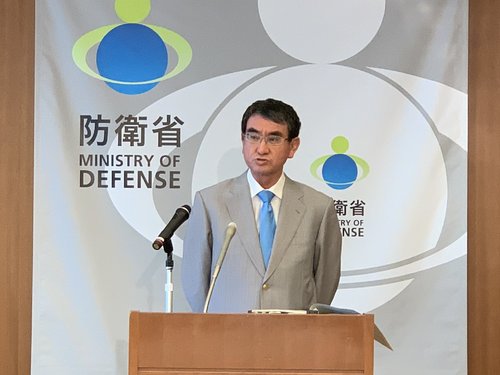
2021 defence budget :
next generation fighter-related expenses 77.2 billion Yen=0.737 billion dollars
Development cost 58.3 billion yen
Avio integration 6.3 billion yen
Unmanned aerial vehicle 1.6 billion yen
Engine design also started
A wide-area radar technology development jointly between Japan and the UK 4.1 billion yen
source:

next generation fighter-related expenses 77.2 billion Yen=0.737 billion dollars
Development cost 58.3 billion yen
Avio integration 6.3 billion yen
Unmanned aerial vehicle 1.6 billion yen
Engine design also started
A wide-area radar technology development jointly between Japan and the UK 4.1 billion yen
source:

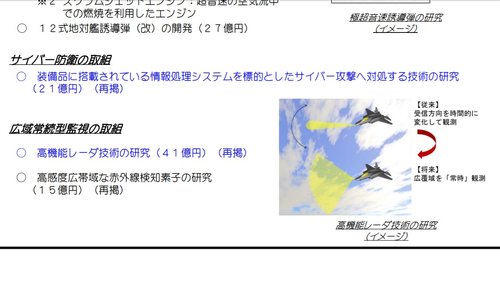
Last edited:
FighterJock
ACCESS: Above Top Secret
- Joined
- 29 October 2007
- Messages
- 5,594
- Reaction score
- 5,914
UAV? Is that a Loyal wingman also?
Sounds like the UAV is Japans version of the Loyal Wingman concept for the USAF TomcatViP.
- Joined
- 11 February 2010
- Messages
- 1,646
- Reaction score
- 2,695
The wide area radar one looks interesting.
I'm curious how they would implement it. It is possible to electronically split the Array into smaller "radar" But power aperture product and later detection range will suffer. Unless somehow a way can be devised so that each of the small antenna can have full gain of the aperture during receiving. Another concern is how one would weigh the radiation pattern for "multiple simultaneous beam" like that.
I'm curious how they would implement it. It is possible to electronically split the Array into smaller "radar" But power aperture product and later detection range will suffer. Unless somehow a way can be devised so that each of the small antenna can have full gain of the aperture during receiving. Another concern is how one would weigh the radiation pattern for "multiple simultaneous beam" like that.
Japanese Loyal Wingman:
They will start manufacturing experimental unmanned aerial vehicles in 2021, aiming to carry out flight demonstration tests around 2024.
source:https://t.co/zjBGgTYajD?amp=1

They will start manufacturing experimental unmanned aerial vehicles in 2021, aiming to carry out flight demonstration tests around 2024.
source:https://t.co/zjBGgTYajD?amp=1
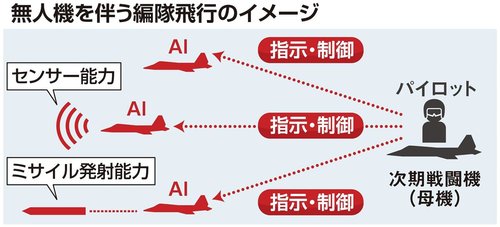
Ares
Man from Far East
- Joined
- 15 October 2018
- Messages
- 100
- Reaction score
- 449
Japan MoD revealed the detail of that wide-area radar jointly developing with the UK.
Basically, it's a Full Digital AESA that every radar element has Digital Beam Foaming capability. Element level DBF technology can constant and instantaneous warning and detection of radio waves over the entire coverage area, which is not possible with existing radars.
This type of radar has already been developed for the naval ship or fixed ground surveillance use and is close to actual deployment even(ex. Thales SEA FIRE, Leonardo Kronos Powershield), but none of have yet been considered for aircraft because the radar modules, as well as the backend processors, become very huge and complicated.
Seems like the UK and Japan have found a breakthrough to make them smaller.
Basically, it's a Full Digital AESA that every radar element has Digital Beam Foaming capability. Element level DBF technology can constant and instantaneous warning and detection of radio waves over the entire coverage area, which is not possible with existing radars.
This type of radar has already been developed for the naval ship or fixed ground surveillance use and is close to actual deployment even(ex. Thales SEA FIRE, Leonardo Kronos Powershield), but none of have yet been considered for aircraft because the radar modules, as well as the backend processors, become very huge and complicated.
Seems like the UK and Japan have found a breakthrough to make them smaller.
Attachments
Last edited:
- Joined
- 11 February 2010
- Messages
- 1,646
- Reaction score
- 2,695
Japan MoD revealed the detail of that wide-area radar jointly developing with the UK.
Basically, it's a Full Digital AESA that every radar element has Digital Beam Foaming capability. Element level DBF technology can constant and instantaneous warning and detection of radio waves over the entire coverage area, which is not possible with existing radars.
This type of radar has already been developed for the naval ship or fixed ground surveillance use and is close to actual deployment even(ex. Thales SEA FIRE, Leonardo Kronos Powershield), but none of have yet been considered for aircraft because the radar modules, as well as the backend processors, become very huge and complicated.
Seems like the UK and Japan have found a breakthrough to make them smaller.
Interesting. Yeah. Currently due to size limitations of AESA elements , cost of Analog to Digital converter and the fact airborne radars operates at frequency too high for A/D sampling it's only practical to implement the DBF into Sub-arrays. The limitations come from the fact that each "digital channel" have its own receivers, mixers and of course the A/D converters. These needs space and power.
However, being able to perform a true element level AESA opens up advantages, especially if paired with something like Photonic true time delay. e.g
1.Use of MLE (Maximum Likelihood Estimation) Angle Finding technique. This could replace the traditional monopulse for angle tracking of target, Thus make the radar immune of more resistant to low angle target tracking error and even Cross Eye jamming technique which specifically target monopulse radar implementation.
2.Considering that now each elements have ADC, each receiver output can be digitized, processed and then beam can then formed digitally, i'm still not sure how it would affect search time. However it might allow much higher jamming or sidelobe resistance. The Radar may not need any additional guard channel, each element can now act as guard channel. Thus the radar in theory at least can cancel/null N-1 amount of jammers where N is the number of elements.
- Joined
- 29 November 2010
- Messages
- 1,773
- Reaction score
- 3,474

政府、無人戦闘機導入を一時検討 コスト削減へ前防衛相主張:東京新聞 TOKYO Web
政府が航空自衛隊F2戦闘機の後継となる次期戦闘機として、無人機の導入を一時検討していたことが分かった。政府関係者が10日、明らかにした...
translation
Japan considered making their next jet unmanned
but abandoned it due to problems with their AEGIS onshore program, which was rejected by local people
- Joined
- 29 November 2010
- Messages
- 1,773
- Reaction score
- 3,474

次期戦闘機、三菱重工と正式契約 防衛相 - 日本経済新聞
岸信夫防衛相は30日の閣議後の記者会見で、次期戦闘機の開発主体として三菱重工業と正式に契約したと発表した。航空自衛隊のF2戦闘機の後継として日本主導で量産をめざす。「F2の退役が始まる2035年ごろまでに初号機を配備できるよう開発を着実に進める」と述べた。三菱重工は小型ジェット旅客機の事業化について凍結する方針だ。岸氏は旅客機の事業凍結は戦闘機の開発に「全く影響がないと考えている」と話した。
 www.nikkei.com
www.nikkei.com
hot of the press
translation
its official!
Japanese DoD gives MHI contract to build the new stealth plane
goal is to replace F-2 and get it in service by 2035
MHI will be in charge of the overall program
engine by a subcontractor (they didnt specify whom)
and they are looking for an overseas partner
FighterJock
ACCESS: Above Top Secret
- Joined
- 29 October 2007
- Messages
- 5,594
- Reaction score
- 5,914
Good news for Japan. I am waiting to see what the chosen design is for the new fighter.

Japan picks Mitsubishi Heavy to lead development of new stealth jet fighter
Japan on Friday said it had picked Mitsubishi Heavy Industries <7011.T> (MHI) to lead the development of a new stealth fighter jet that Japan wants operational by the mid-2030s to counter advanced Chinese aircraft.
NUSNA_Moebius
I really should change my personal text
- Joined
- 26 May 2012
- Messages
- 233
- Reaction score
- 136
Good luck to them but I'm expecting the usual list of delays + cost overruns, and with it low procurement numbers that tend to plague Japanese projects.
- Joined
- 29 November 2010
- Messages
- 1,773
- Reaction score
- 3,474
I hope its an interesting designGood news for Japan. I am waiting to see what the chosen design is for the new fighter.
but given their past designs (F-1 looking like a jaguar, F-2 like an F-16, C-2 like a mini C-17, etc).. I wouldn't be surprised if we adopted something very conservative and low risk, especially if they want to get it out soon. which unfortunately means, something that looks like a Lockmart design.
FighterJock
ACCESS: Above Top Secret
- Joined
- 29 October 2007
- Messages
- 5,594
- Reaction score
- 5,914
I too hope that it is a cutting edge design helmutkohl, but I too fear that it is going to be based on an existing Lockheed product. Several of the designs that were revealed were takeoffs of the F-22.I hope its an interesting designGood news for Japan. I am waiting to see what the chosen design is for the new fighter.
but given their past designs (F-1 looking like a jaguar, F-2 like an F-16, C-2 like a mini C-17, etc).. I wouldn't be surprised if we adopted something very conservative and low risk, especially if they want to get it out soon. which unfortunately means, something that looks like a Lockmart design.
Ares
Man from Far East
- Joined
- 15 October 2018
- Messages
- 100
- Reaction score
- 449
Expect that overview design may reveal to the public in April next year when the development team is fully established or as early as March with a finalized overview of the 2021 defence budget document.
I want to see some cool ass CG movie PR like western companies do, but it never gonna happen.
I want to see some cool ass CG movie PR like western companies do, but it never gonna happen.
- Joined
- 11 February 2010
- Messages
- 1,646
- Reaction score
- 2,695
I but given their past designs (F-1 looking like a jaguar, F-2 like an F-16, C-2 like a mini C-17, etc).. I wouldn't be surprised if we adopted something very conservative and low risk, especially if they want to get it out soon. which unfortunately means, something that looks like a Lockmart design.I am waiting to see what the chosen design is for the new fighter.
Well cost and risk reduction is part of aircraft design too.
Ares
Man from Far East
- Joined
- 15 October 2018
- Messages
- 100
- Reaction score
- 449
Regarding this, Defense Minister Kishi said at a press conference after the Cabinet meeting that "three foreign companies have offered to support the coordination of development."
The three companies offered were Boeing, Lockheed Martin in the United States, and BAE Systems in the United Kingdom.
The Ministry of Defense plans to narrow down the companies that will receive support from these three companies, decide on a development framework by the end of the year, and proceed with the development toward the start of mass production in 2031.

 www3.nhk.or.jp
www3.nhk.or.jp
The three companies offered were Boeing, Lockheed Martin in the United States, and BAE Systems in the United Kingdom.
The Ministry of Defense plans to narrow down the companies that will receive support from these three companies, decide on a development framework by the end of the year, and proceed with the development toward the start of mass production in 2031.

航空自衛隊 F2戦闘機の後継機 海外3社から開発支援の申し出 | NHKニュース
【NHK】航空自衛隊のF2戦闘機の後継となる次期戦闘機について、岸防衛大臣は、海外企業3社から開発支援の申し出があったことを明らか…
FighterJock
ACCESS: Above Top Secret
- Joined
- 29 October 2007
- Messages
- 5,594
- Reaction score
- 5,914
Regarding this, Defense Minister Kishi said at a press conference after the Cabinet meeting that "three foreign companies have offered to support the coordination of development."
The three companies offered were Boeing, Lockheed Martin in the United States, and BAE Systems in the United Kingdom.
The Ministry of Defense plans to narrow down the companies that will receive support from these three companies, decide on a development framework by the end of the year, and proceed with the development toward the start of mass production in 2031.

航空自衛隊 F2戦闘機の後継機 海外3社から開発支援の申し出 | NHKニュース
【NHK】航空自衛隊のF2戦闘機の後継となる次期戦闘機について、岸防衛大臣は、海外企業3社から開発支援の申し出があったことを明らか…www3.nhk.or.jp
Interesting to see that Northrop Grumman failed to make the cut for the F-3, though it is good to see BAE Systems still represented.
- Joined
- 8 January 2006
- Messages
- 1,609
- Reaction score
- 758
Because McDonnell Douglas, when their gas-driven fan system didn't work out, went with a separate lift engine and violated the customer requirements of only one engine. If they had switched to the same shaft-driven lift fan concept that LM-Aero used, they likely would have had a better chance.Looks somewhat like a mix of NG F-23A and MDC/NG/BAe JSF-proposal
I really loved those MDC/NG designsI wish it could have been chosen as one of the two finalists for JSF
Same here helmutkohl. To this day I do not know why they picked the Boeing X-32 over the McDonnell Douglas/Northrop design.
IMHO, they and LM-Aero had the best aerodynamic designs.
red admiral
ACCESS: Top Secret
- Joined
- 16 September 2006
- Messages
- 1,804
- Reaction score
- 2,373
Did you see anything ever saying that NG had expressed an interest? I don't think i did.Interesting to see that Northrop Grumman failed to make the cut for the F-3, though it is good to see BAE Systems still represented.
FighterJock
ACCESS: Above Top Secret
- Joined
- 29 October 2007
- Messages
- 5,594
- Reaction score
- 5,914
Did you see anything ever saying that NG had expressed an interest? I don't think i did.Interesting to see that Northrop Grumman failed to make the cut for the F-3, though it is good to see BAE Systems still represented.
For a while we did see those designs that were reminiscent of the YF-23 design so I automatically thought that Northrop was helping out (at least in the background) with the designing of the F-3.
- Joined
- 29 November 2010
- Messages
- 1,773
- Reaction score
- 3,474
Did you see anything ever saying that NG had expressed an interest? I don't think i did.Interesting to see that Northrop Grumman failed to make the cut for the F-3, though it is good to see BAE Systems still represented.
For a while we did see those designs that were reminiscent of the YF-23 design so I automatically thought that Northrop was helping out (at least in the background) with the designing of the F-3.
what you saw was most likely 24DMU
but since then they went to other, more Lockmart style designs.
but like many I was an YF-23 fan and wished 24DMU became real due to how similar they looked

Similar threads
-
Mitsubishi X-2 ATD-X Shinshin Demonstrator
- Started by Sentinel Chicken
- Replies: 327
-
-
-
-

